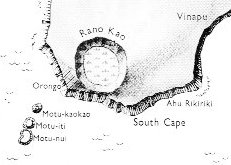1. Should we count also the pair of empty glyph spaces on the Keiti tablet the length of its text will be 630:
But I cannot add void glyph spaces to those with glyphs. Considering the fact that π is slightly larger than 3.14 there ought to be slightly more than 314 glyphs in a cycle. 630 = 10 * 63 and we have here possibly approached the explanation of why there are 63 glyphs at the end of side b on the G tablet.
March 29 is day 88 in the Gregorian calendar. It is also day 8 beyond March 21. In the G text the great henua in Gb7-6 comes 14 days later than that in Gb6-20. Ptolemaios had 48 constellations and 40 more were added much later: "In 1922, Henry Norris Russell aided the IAU (International Astronomical Union) in dividing the celestial sphere into 88 official constellations. Where possible, these modern constellations usually share the names of their Graeco-Roman predecessors, such as Orion, Leo or Scorpius. The aim of this system is area-mapping, i.e. the division of the celestial sphere into contiguous fields. Out of the 88 modern constellations, 36 lie predominantly in the northern sky, and the other 52 predominantly in the southern." (Wikipedia) 360 / 10 = 36 and 52 * 7 = 364 = 26 * 14. 630 = 45 * 14 and 45 = 360 / 8. This could be a hint we should count with 8 cycles on Easter Island. Day 63 in the Gregorian calendar is March 4:
Rogo in Gb3-15 is presumably located in its position because of the number (315 days = 45 weeks). The intention could have been to depict an 'egg' (O), representing the uncountable and unknown fraction more than 3.14 (cfr at Egyptian X). From the previous 0-Rogo the distance is 73 (possibly = 365 / 5):
In the G text the position of heliacal rising at 'March 4 (63) was probably referring to the end of side a:
| |||||||||||||||||||||||||||||||||||||||||||||||||||||||||||||||||||||||||||||||||||||||||||||||||||||||||||||||||||||||||||||||||||||||||||||||||||||||||||||||||||||||||||||||||||||||||||||||||||||||||||||||||||||||||||||||||||||||||||||||||||||||||||||||||||||||||||||||||||||||||||||||||||||||||||||||||||||||||||||||||||||||||||||||||||































